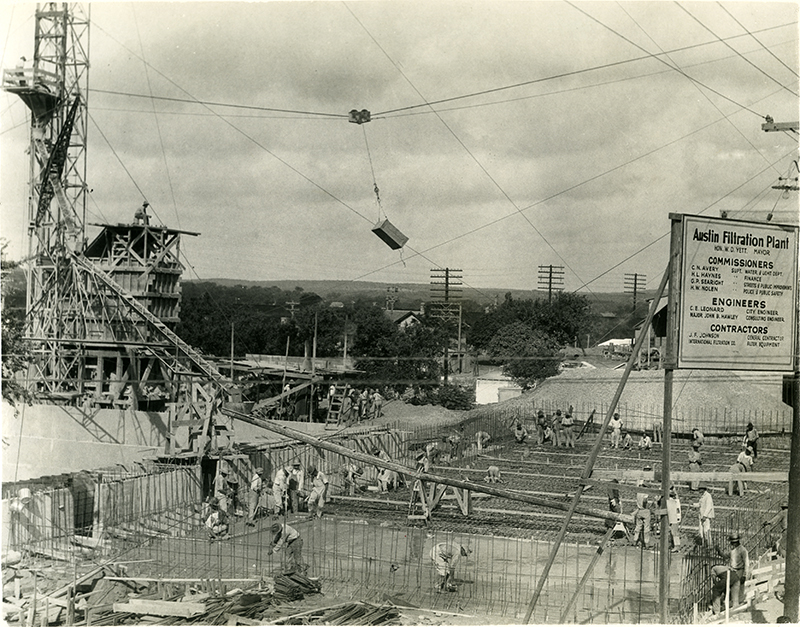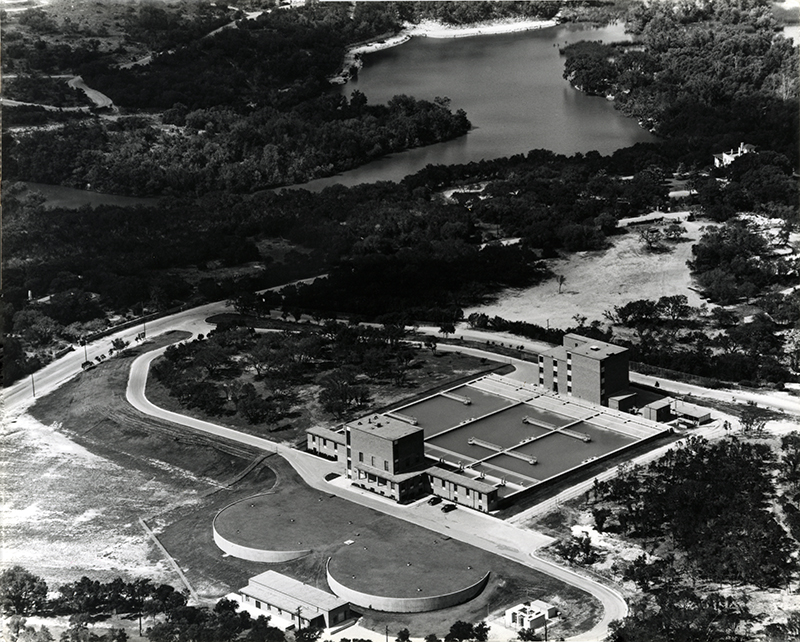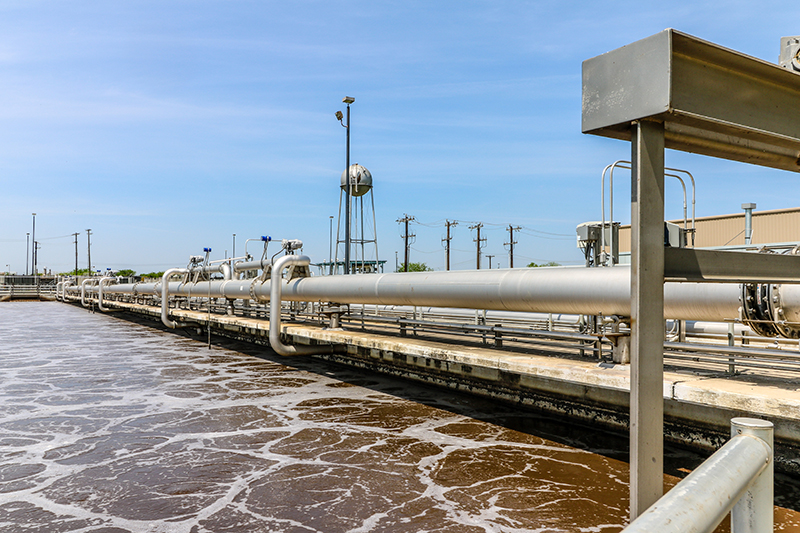Then and Now: Green Water Treatment Plant, Leon Creek Water Recycling Center
![]() Throughout our 125th anniversary year, our Then and Now series share historical photos that connect to the work we still do today. Here, we look at the innovative treatment solutions we’ve provided Central Texas in the 1920s, 1980s and today.
Throughout our 125th anniversary year, our Then and Now series share historical photos that connect to the work we still do today. Here, we look at the innovative treatment solutions we’ve provided Central Texas in the 1920s, 1980s and today.
A First for Austin
The Green Water Treatment Plant, designed by Freese and Nichols founder John Hawley, was the City of Austin’s first water filtration plant. The $500,000 10-MGD plant and water distribution system went into operation in 1924; the City had previously depended on coagulation, sedimentation and chlorination to treat Colorado River Water. The Green WTP would be Austin’s sole source of treated water until 1954.

Like New Again
Sixty years later, Freese and Nichols would return to work on the Green plant, doubling its capacity from 22 MGD to 45 MGD. The firm had to make renovations while keeping the plant in operation during the high-use spring and summer months. Achieving uninterrupted water service meant that newly upgraded sections of the plant had to be perfectly compatible with old equipment throughout the two-year construction. The improvements were completed in 1986 at a cost of $10 million, some $6 million below the budget for the job.

Helping Build the Nation’s Largest Recycled Water Delivery System
San Antonio is one of the fastest-growing areas of the U.S., with the San Antonio Water System (SAWS) serving more than 1.2 million customers. SAWS has committed to building the largest recycled water delivery system. A critical part of this system is the Leon Creek Water Recycling Center, which was showing signs of stress and aging.
Freese and Nichols partnered with SAWS to deliver innovative rehabilitations and process improvements to the center while keeping the plant running at capacity 24 hours a day. In order to not disrupt the plant’s operations, a bypass pumping installation was designed and built to achieve 100 percent bypass of plant flows, even as two basins at a time were taken out of service for repairs. Construction was carefully sequenced to maintain the normal treatment of wastewater and solids.
During this four-year, $11.5 million project, SAWS updated the water recycling center’s treatment equipment, improved operations with automation, and saved money on electricity, chemicals and labor. As a result, Leon Creek can provide up to 29 million gallons a day of highly treated effluent to industrial and commercial customers, golf courses and parks. The center is a conventional activated sludge facility permitted for a peak flow of 92 MGD and maximum hydraulic peak flow of 72 MGD.


